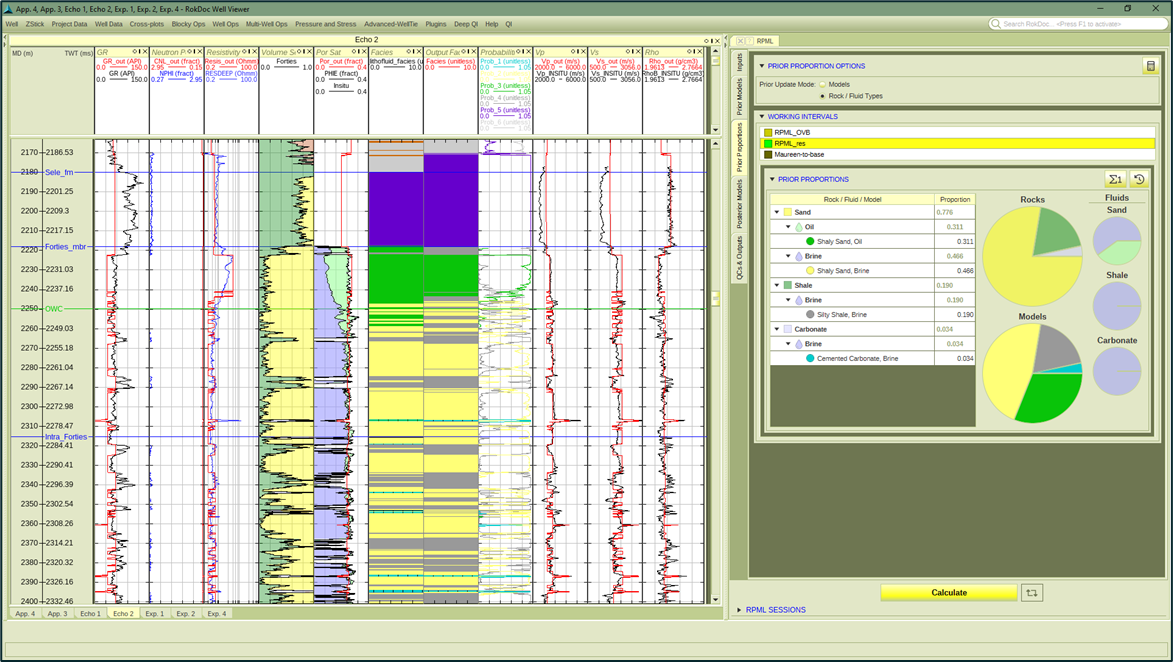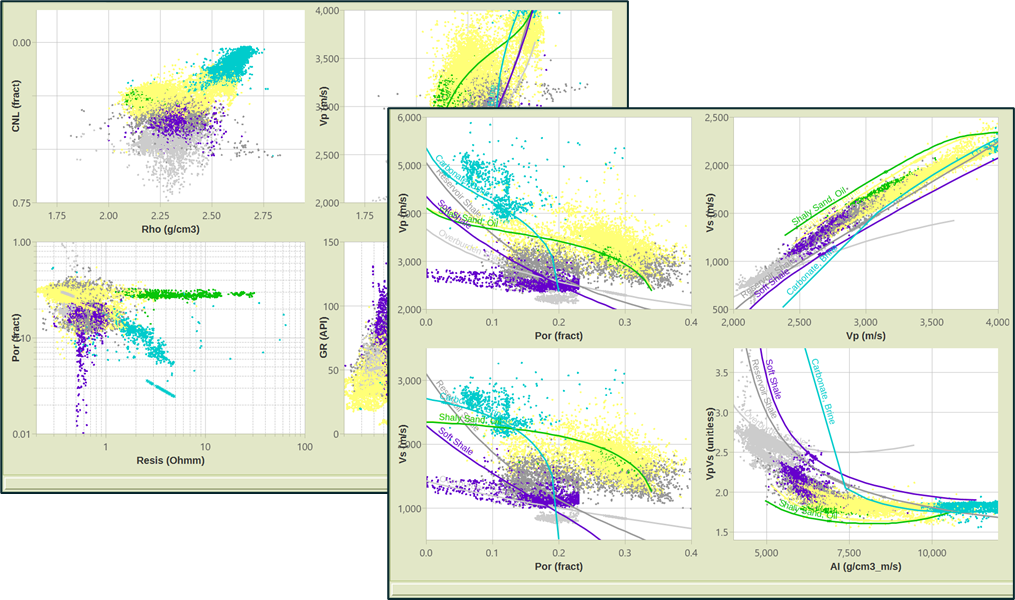More usability and streamlined workflows released in our RokDoc Pressure Prediction module
Innovation is one of our values, with RokDoc 2022.4, we are pleased to announce the new addition to the Deep QI module:
Petrophysical facies interpretation and Rock Physics modelling are two fundamental stages in any quantitative interpretation workflow. To perform these stages accurately and efficiently, data exchange and cooperation with different subject matter experts are critical. As collaboration tends to increase complexity, reliable automation is a needed tool for fast and smooth delivery.
Automation for petrophysical facies interpretation translates to machine learning algorithms that, at the current state-of-the-art, are not able to fully capture compaction trends. The error added to such automated ML interpretation may propagate in the Rock Physics modelling and ultimately in the inversion. To overcome these current ML limits, we have developed the Rock Physics Machine Learning (RPML) toolkit that takes compaction trends into account in the inversion for petrophysical facies and rock physics model parameters.

The toolkit outputs the interpreted petrophysical facies logs, the petro-elastic depth trends and the rock physics parameters as optimized by the inversion.

The RPML toolkit allows saving of both the prior, regionally bound models, as well as the posterior calibrated rock physics models, thus optimizing the data exchange among teams. In fact, a regional prior model can be tested, approved, and applied to different areas in the same region, assuring consistency and accuracy across different projects.
- The New Rock Physics Machine Learning tool (RPML) within the Deep QI module, technical collaboration with CSIRO, will increase performance and flexibility in rock physics, petrophysical analysis, and data-trend workflows.
For more information, please see the RokDoc Platform Add-ons section of our website!

Nov 16, 2022 4:37:10 PM


-3.png?width=500&height=500&name=MicrosoftTeams-image%20(52)-3.png)
-3.png?width=500&height=500&name=MicrosoftTeams-image%20(49)-3.png)
-1.png?width=500&height=500&name=MicrosoftTeams-image%20(47)-1.png)
